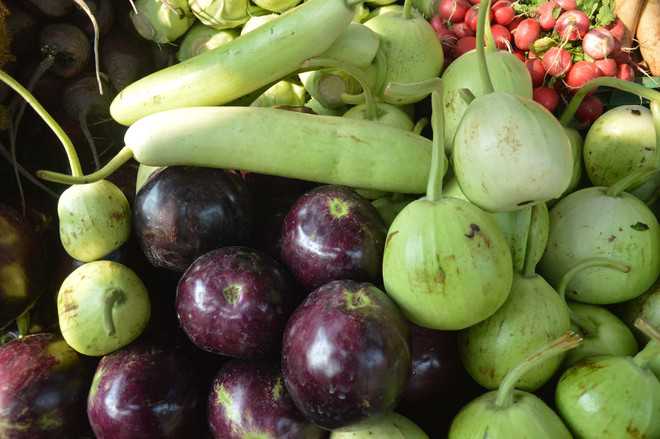JAMMU: The 10 army personnel, who went missing after their high-altitude post on Siachen Glacier was hit by an avalanche on Wednesday, were declared dead by the army on Thursday evening.
 PTI PHOTOThe rescuers used modern equipment and sniffer dogs to trace the missing soldiers but their efforts proved futile.“Demise of soldiers in Siachen is very tragic. I salute the brave soldiers who gave their lives to the nation. Condolences to their families ,” Prime Minister Narendra Modi said.
PTI PHOTOThe rescuers used modern equipment and sniffer dogs to trace the missing soldiers but their efforts proved futile.“Demise of soldiers in Siachen is very tragic. I salute the brave soldiers who gave their lives to the nation. Condolences to their families ,” Prime Minister Narendra Modi said.
Lt Gen DS Hooda, Army Commander, Northern Command, also paid a tribute to the deceased soldiers and said “It is a tragic event and we salute the soldiers who braved all challenges to guard our frontiers and made the ultimate sacrifice in the line of duty.”
The army and the IAF had tried their best to rescue the soldiers — a Junior Commissioned Officer (JCO) and nine other ranks of Madras Regiment -after their post was hit by the avalanche at the altitude of 19,000 feet close to the Line of Control (LoC) with Pakistan.
Specialised teams with modern equipment were flown to Leh and pressed into service along with sniffer dogs but all efforts to rescue the soldiers failed.
The glaciated area witnesses extreme temperatures ranging from a maximum of -25 degrees Celsius during the day to the minimum of -42 degrees Celsius in the night.
Defence public relations officer (PRO) based in Northern Command Col S D Goswami had earlier stated, “Rescue teams are braving adverse weather and effects of rarified atmosphere to locate and rescue survivors. However, it is with deepest of regrets that we have to state that chances of finding any survivors are now very remote.” ARMY SAYS NO TO PAKISTAN’S HELP
Earlier in the day, Director General of Military Operations Lt Gen Ranbir Singh declined his Pakistani counterpart’s offer for help in rescuing the missing soldiers, saying that necessary resources had already been put in place.
Army sources said Pakistan’s DGMO Major General Amir Riaz offered to help in tracing the missing army personnel. They said such calls were routine whenever any incident happened near the border.
Incidentally, the offer to help came over 30 hours after the incident.

All 10 Siachen soldiers dead
 Operations by the specialised teams of the Army and the Air Force in progress to rescue the soldiers hit by an avalanche in Siachen. PTI
Operations by the specialised teams of the Army and the Air Force in progress to rescue the soldiers hit by an avalanche in Siachen. PTITribune News Service,Jammu/New Delhi, February 4
All 10 soldiers missing in an avalanche that hit an Army post, located at an altitude of 19,600 feet at the Siachen Glacier, have died.”Demise of soldiers in Siachen is very tragic. I salute the brave soldiers who gave their lives to the nation. Condolences to their families,” Prime Minister Narendra said, confirming the fears about their fate. “It is with deepest of regrets that we have to state that the chances of finding any survivors are now very remote,” Northern Command spokesp-erson Col SD Goswami said.With the temperatures in the glaciated area ranging between minus 25 degrees during the day and minus 42 degrees in the night, the rescue teams were braving adverse weather conditions and rarefied atmosphere to locate the survivors, he said.A ‘wall of ice’ buried the post, a stone bunker bang on the actual ground position line (AGPL), a 109 km-long divide between India and Pakistan, on Wednesday.
Avalanche centre had warned army
WARMING TRENDS IN HIMALAYAN REGION, NEED TO CHECK WHAT’S HAPPENING, SAYS SASE DIRECTOR
CHANDIGARH: Snow and Avalanche Study Establishment (SASE) here had issued a “low danger” warning to the army on February 2 for the general area of Siachen glacier. The avalanche struck on February 3, after which 10 soldiers are still missing, as rescue couldn’t be carried out on Thursday.
“Our warning was low-danger level. It was meant for avalanche activity only. We advised them (the army) to move cautiously through the valley bottom. It was not a regular avalanche. It was an ice avalanche, which is more difficult to predict unless you monitor each individual slope,” said SASE director Ashwagosha Ganju. “Sometimes high danger is involved when there are abnormal winds and snowfall coupled with other instability factors. There are cases when we are sure that 8 out of 10 avalanche sites will trigger in an area. Then we issue a specific alert,” he added.
Asked whether the army follows the advice, as even earlier accidents have happened in spite of warning, he said: “I can’t talk about the operational role of the army. I deal with science. I inform them when situations warrants and they take a call depending on their operational commitments.” On February 8, 2010, an avalanche at Khilanmarg, 8 km from Gulmarg in Jammu and Kashmir, killed 17 soldiers. The SASE had issued a specific alert then. Another avalanche on February 22, 2012, killed 16 army personnel in Ganderbal and Bandipora districts of Kashmir. Then too, warnings were issued.
SASE was set up under the Ministry of Defence to combat the hazards of snow to help the armed forces live and fight in the mountains. It has a network of nearly 80 weather stations, manual and automatic, across Jammu and Kashmir, Himachal Pradesh and Uttarakhand.
Ganju said that for some years, warning trends were up but how it would manifest in avalanche formation and its frequency was a matter of in-depth study. “For this, Him Parivartan Project is on at Siachen. We have to understand the phenomena first and be sure about what is happening,” said the SASE director, adding: “In the Himalayas, climate change trends resulted in abnormal snowfall at times and increase in liquid precipitation. About 80% of the predictions on avalanche come correct. For Siachen glacier, the success rate is between 75 and 80%. An average of 20 avalanches trigger every year in this region.”








































































